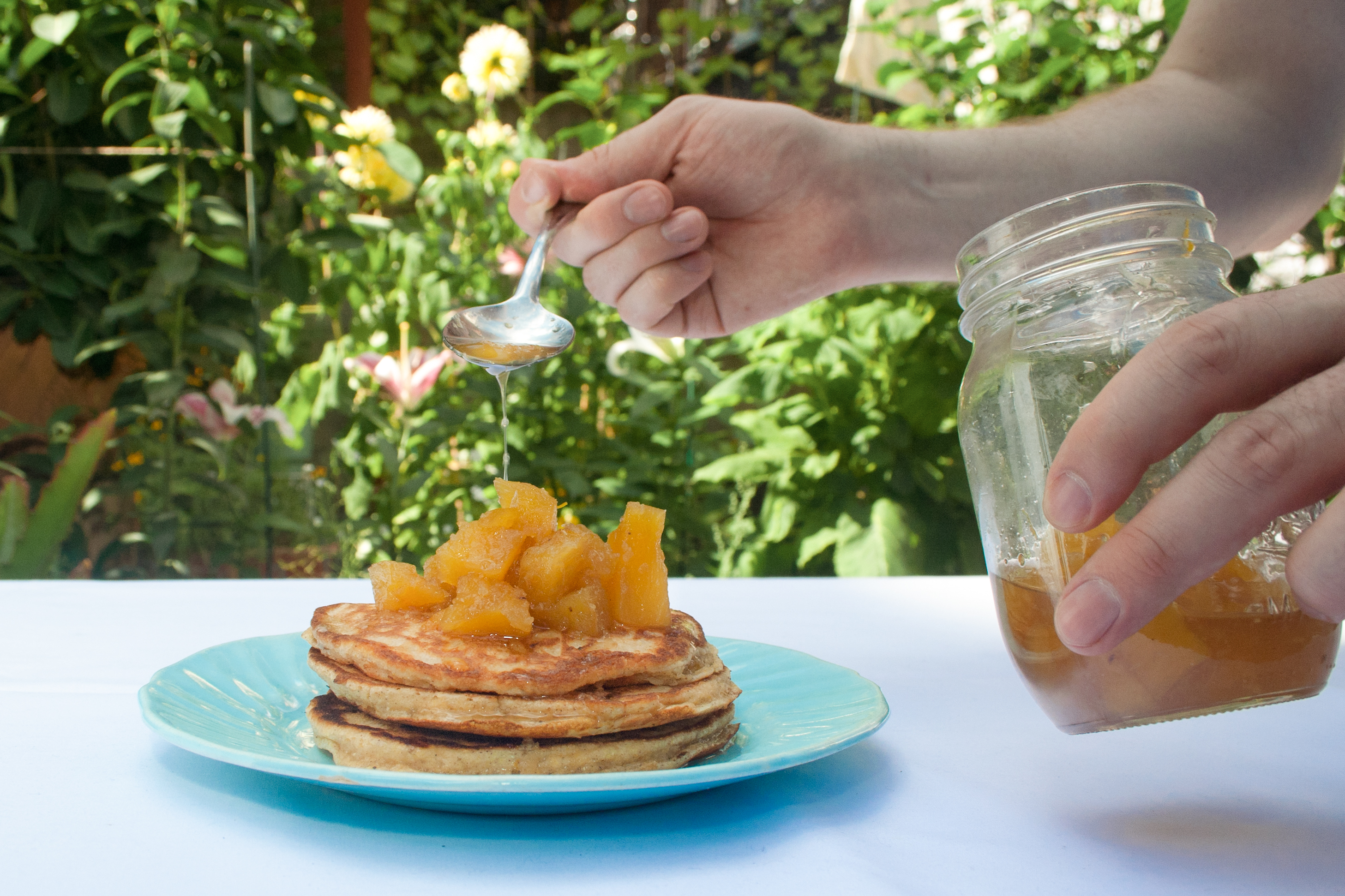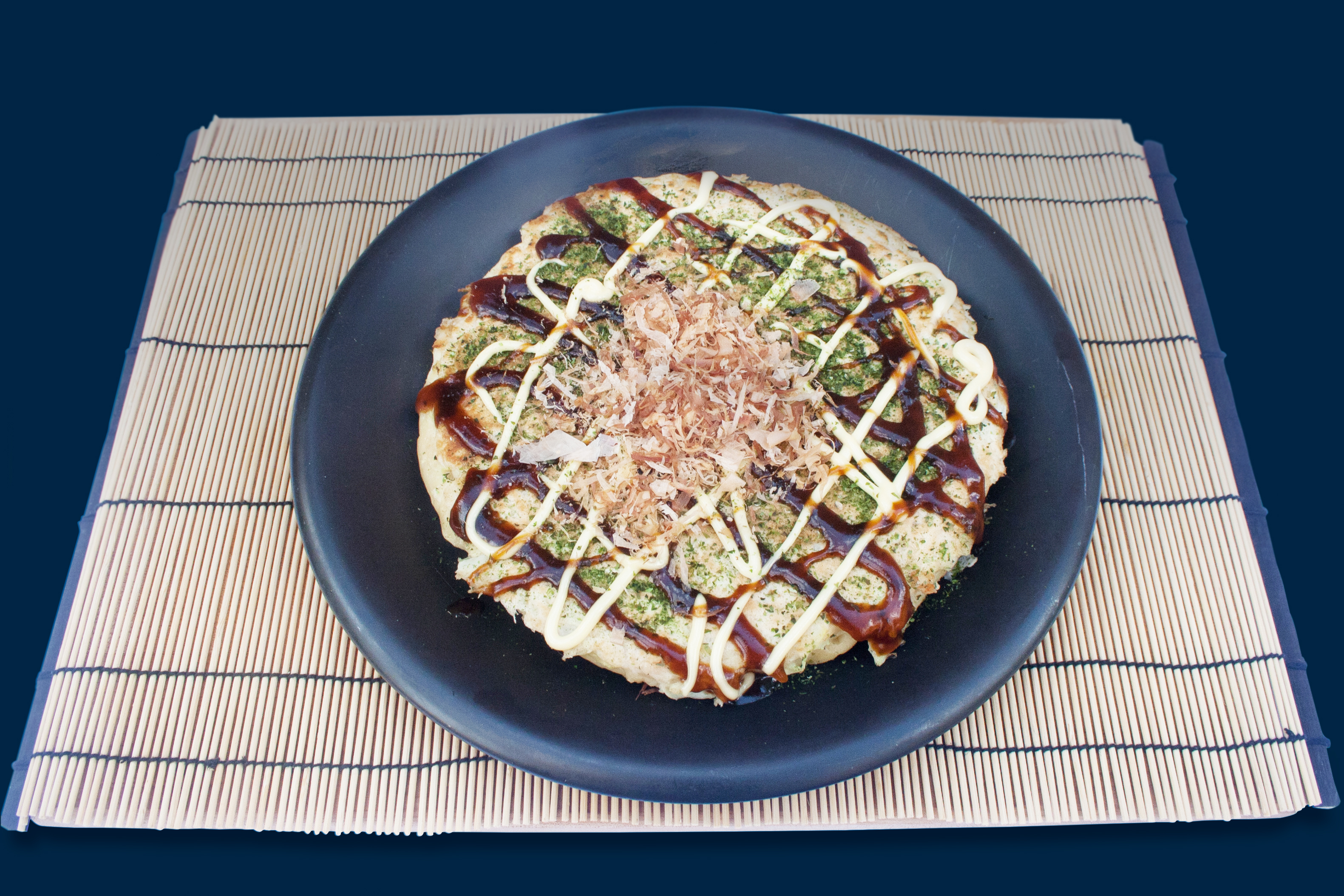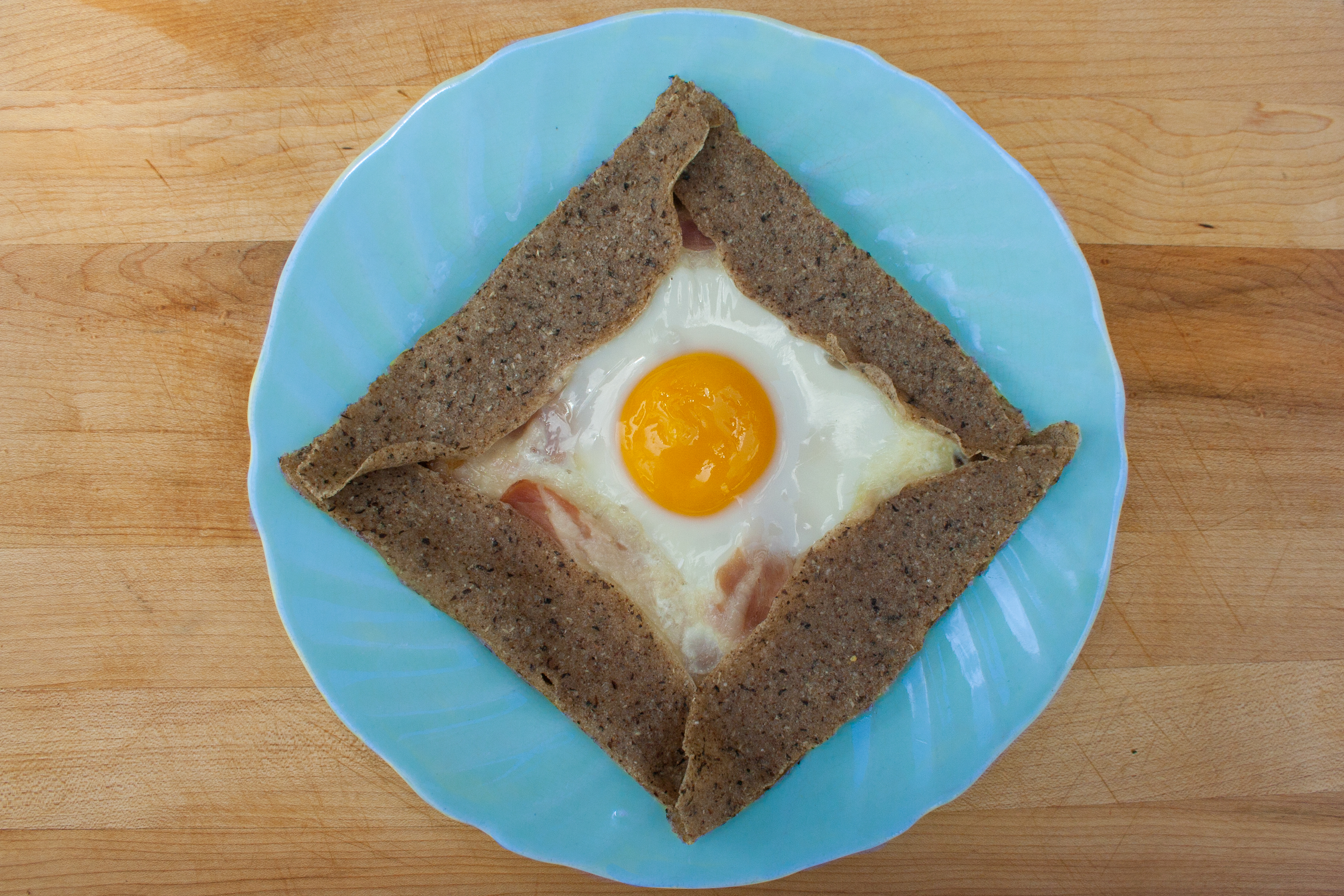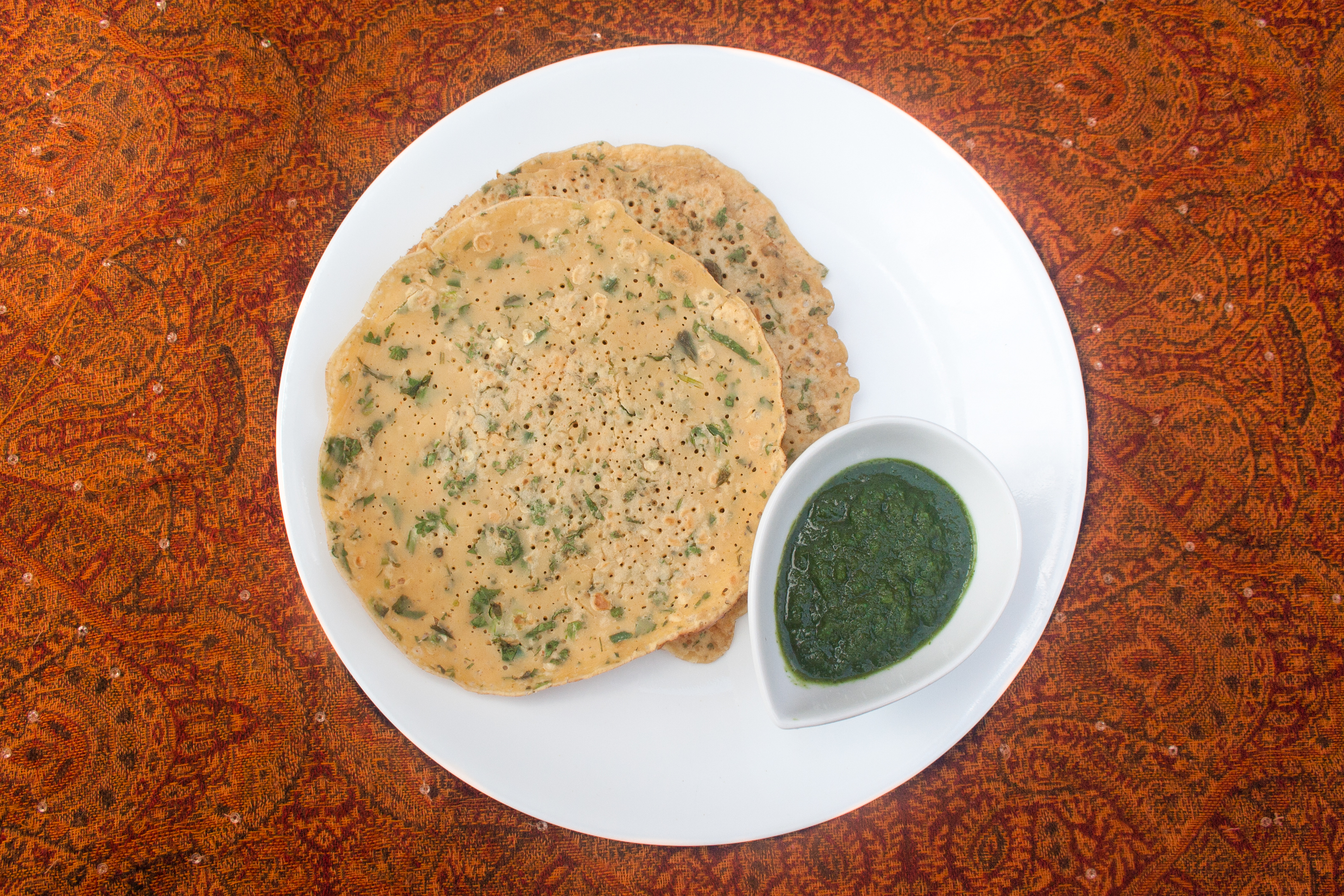
Flour, eggs, milk. Drop a spoonful of the mixture into a pan. Cook, flip, cook some more. This process was a step up from boiling an egg in my culinary apprenticeship.
My Irish-Canadian mother taught me how to make pancakes. Hers are ultra-thick and airy from the addition of baking powder. We slather them with butter and drown them in maple syrup.
My French-Canadian father taught me how to make crêpes. These are paper-thin, slightly spongy, and rich from the melted butter mixed into the batter. We’d fill them with creamy seafood or eat them with strawberries and lemon yogurt.
Pancake or crêpe, thick or thin, I learned very early in life that no matter how flat you make a pancake, it always has two sides.
Even if they’re just a blob of batter sizzling in a pan, the humble pancake provides some perspective. While the modern pancake is associated with the North American breakfast, its cultural roots run deep and wide. According to Foodtimeline.org, the Ancient Romans ate pan-fried cakes called alita dolcia (Latin for “another sweet”). Throughout history, with its variations in ingredients and levels of flatness, the pancake has had a place in a multitude of food traditions.
Johnnycakes sizzling in a skillet over an open fire. Potato latkes frying up for Chanukah. From Japan’s okonomiyaki to France’s galette au sarrasin and India’s pudla, the pancake’s many permutations offer fascinating insight into regional cuisines around the world. And with modern adaptations, the pancake continues to evolve.
——
Okonomiyaki
Okonomiyaki is made with wheat flour and very thick, but it’s nothing like its American breakfast counterpart.
This Japanese savoury pancake gets its name from the words okonomi, meaning “what you like,” and yaki, which means “grilled” or “cooked.” Some restaurants provide the raw ingredients to their customers who then mix the batter themselves and grill the pancake on a griddle at the centre of their table. Because it’s up to you to choose what you’d like in your okonomiyaki, no two pancakes are the same.
Toppings and batters vary according to region, but the key ingredients are flour, dashi, eggs, cabbage, pork belly, or seafood. Grated nagaimo, a root vegetable, is what gives the pancake a bouncy texture. Okonomiyaki is usually topped with a sweet, BBQ-like sauce, seaweed flakes, mayonnaise, and dried fish flakes.
Makiko Itoh at Just Hungry gives a comprehensive run-down on how to make an Osaka-style okonomiyaki.
Galette au Sarrasin
While okonomiyaki is thick and dense, the French crêpe is thin and airy.
In France, during Chandeleur or Candlemas on February 2, the act of making crêpes is replete with ritual. You hold the pan in one hand and a coin in the other. If you manage to flip the crêpe, you’ll have luck and prosperity for the rest of the year.
In France’s Brittany, when you swap out the wheat flour for buckwheat, you get a galette au sarrasin. Also called blé noir or “black wheat,” buckwheat is gluten-free and gives the crêpe a nutty taste, which makes it perfect for savoury toppings. Some recipes even call for a cup of beer in the batter instead of the standard milk or water.
Marcus Samuelsson provides a recipe for the classic galette complète, a buckwheat crêpe garnished with ham, cheese, and egg, with the edges folded up to form a square.
Pudla
Like a French buckwheat crêpe, India’s pudla is also gluten-free, and the use of water instead of milk makes it vegan as well.
This savoury pancake made from chickpea flour is a great alternative to naan or paratha. Almost as thin as a crêpe, pudla hails from Gujarat and has minced chilis, coriander, and ginger mixed into the batter. Like any perfectly executed Indian dish, it’s a fine balance of hot and cool, rich and fresh. It’s fantastic alongside a curry or with your choice of chutney or pickle.
The Kitchn features Mallika Basu’s awesome pudla recipe.
Here’s one of my own pancake recipes, inspired by my love for Caribbean food. The cornmeal is a nod to the Jamaican festival dumpling. The pineapple and coconut make it sunny. The rum makes everything irie.
Flour, eggs, milk. Drop a spoonful of the mixture into a pan. Cook, flip, cook some more. This process was a step up from boiling an egg in my culinary apprenticeship.
My Irish-Canadian mother taught me how to make pancakes. Hers are ultra-thick and airy from the addition of baking powder. We slather them with butter and drown them in maple syrup.
My French-Canadian father taught me how to make crêpes. These are paper-thin, slightly spongy, and rich from the melted butter mixed into the batter. We’d fill them with creamy seafood or eat them with strawberries and lemon yogurt.
Pancake or crêpe, thick or thin, I learned very early in life that no matter how flat you make a pancake, it always has two sides.
Even if they’re just a blob of batter sizzling in a pan, the humble pancake provides some perspective. While the modern pancake is associated with the North American breakfast, its cultural roots run deep and wide. According to Foodtimeline.org, the Ancient Romans ate pan-fried cakes called alita dolcia (Latin for “another sweet”). Throughout history, with its variations in ingredients and levels of flatness, the pancake has had a place in a multitude of food traditions.
Johnnycakes sizzling in a skillet over an open fire. Potato latkes frying up for Chanukah. From Japan’s okonomiyaki to France’s galette au sarrasin and India’s pudla, the pancake’s many permutations offer fascinating insight into regional cuisines around the world. And with modern adaptations, the pancake continues to evolve.
------
Okonomiyaki
Okonomiyaki is made with wheat flour and very thick, but it’s nothing like its American breakfast counterpart.
This Japanese savoury pancake gets its name from the words okonomi, meaning "what you like," and yaki, which means "grilled" or "cooked." Some restaurants provide the raw ingredients to their customers who then mix the batter themselves and grill the pancake on a griddle at the centre of their table. Because it’s up to you to choose what you’d like in your okonomiyaki, no two pancakes are the same.
Toppings and batters vary according to region, but the key ingredients are flour, dashi, eggs, cabbage, pork belly, or seafood. Grated nagaimo, a root vegetable, is what gives the pancake a bouncy texture. Okonomiyaki is usually topped with a sweet, BBQ-like sauce, seaweed flakes, mayonnaise, and dried fish flakes.
Makiko Itoh at Just Hungry gives a comprehensive run-down on how to make an Osaka-style okonomiyaki.
Galette au Sarrasin
While okonomiyaki is thick and dense, the French crêpe is thin and airy.
In France, during Chandeleur or Candlemas on February 2, the act of making crêpes is replete with ritual. You hold the pan in one hand and a coin in the other. If you manage to flip the crêpe, you’ll have luck and prosperity for the rest of the year.
In France’s Brittany, when you swap out the wheat flour for buckwheat, you get a galette au sarrasin. Also called blé noir or “black wheat,” buckwheat is gluten-free and gives the crêpe a nutty taste, which makes it perfect for savoury toppings. Some recipes even call for a cup of beer in the batter instead of the standard milk or water.
Marcus Samuelsson provides a recipe for the classic galette complète, a buckwheat crêpe garnished with ham, cheese, and egg, with the edges folded up to form a square.
Pudla
Like a French buckwheat crêpe, India’s pudla is also gluten-free, and the use of water instead of milk makes it vegan as well.
This savoury pancake made from chickpea flour is a great alternative to naan or paratha. Almost as thin as a crêpe, pudla hails from Gujarat and has minced chilis, coriander, and ginger mixed into the batter. Like any perfectly executed Indian dish, it’s a fine balance of hot and cool, rich and fresh. It’s fantastic alongside a curry or with your choice of chutney or pickle.
The Kitchn features Mallika Basu’s awesome pudla recipe.
Here’s one of my own pancake recipes, inspired by my love for Caribbean food. The cornmeal is a nod to the Jamaican festival dumpling. The pineapple and coconut make it sunny. The rum makes everything irie.



